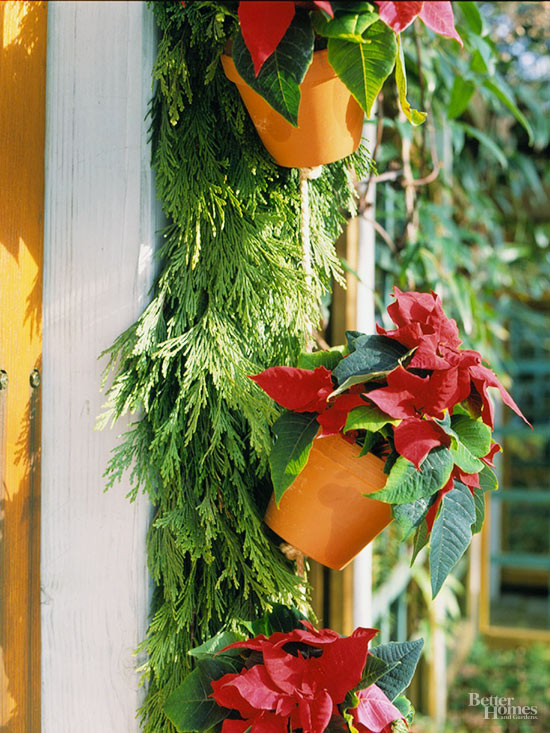






Poinsettias (Poinsettia) are easy to maintain, but it takes some effort to make them bloom a second time. To grow them after the holidays, all you need to do is treat them similar to other houseplants: Give them bright light, allow them to slightly dry between waterings, and feed them with a liquid houseplant fertilizer according to label directions. That's the easy part. The bracts (those are the leaves that look like flower petals) will eventually fade and fall off the plant. At this point, cut back the stems to just below the flowers and let them continue to grow.
Getting the plants to rebloom is the hard part. It's likely that you won't be able to bring all 10 plants into flower again, simply because of space limitations. In spring, once nighttime temperatures are consistently above 50 degrees F, place your poinsettias outside where they'll receive bright, indirect light. They will grow but will remain completely green all summer. Prune back the plants by one-half to one-third in midsummer, and repot them in the same pot, or in one that's slightly larger if the plant has grown significantly. Use a commercial potting soil. Feed the plants with a standard houseplant fertilizer during this time of new growth.
continue reading below
At the end of summer, bring the pots indoors before nighttime temperatures fall below 50 degrees F. From September 21 through the end of October, the plants need 14-15 hours of uninterrupted darkness daily, and nighttime temperatures around 65 degrees. This is the secret to triggering new flowers to form and for the bracts to change color. This means that every day at about 5 p.m. you'll need to cover the plants. Uncover them between 7 and 8 the following morning. Absolutely no light can penetrate the darkness. If you place a box over them, it must not permit light to enter. If you place plants in an extra bedroom, no light can enter the room beneath the crack of the door or through a window. Even car headlights shining through a window are enough to interrupt the required darkness. Greenhouse growers use thick black cloths to cover their poinsettia crops, blocking out all light from passing cars and nearby shopping centers.
If you successfully carry out the darkness routine, by early November your plants will be developing color, and you can end the daily darkness ritual and set the plants in bright, indirect light. By the end of November, the bracts should be coloring up nicely, and you'll be able to enjoy them through the next holiday season.
Copyright © www.100flowers.win Botanic Garden All Rights Reserved